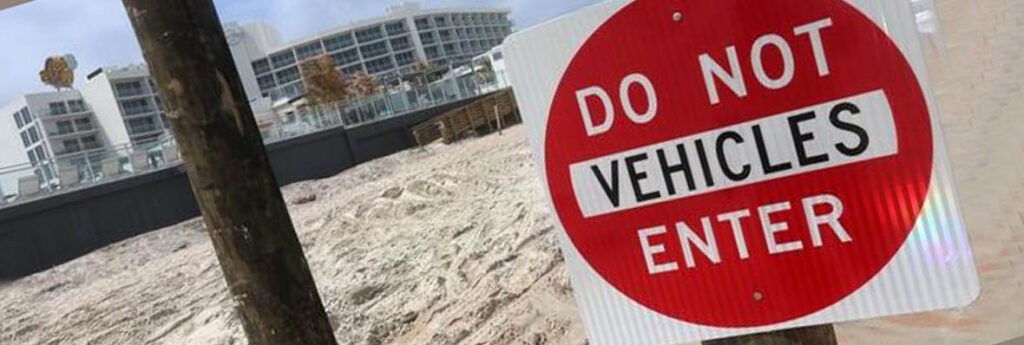The Hard Rock Hotel has done what many a visitor to Daytona Beach, Florida has always wanted to do: block off the beach to vehicle traffic. But many locals don’t like it.
Driving on the seaside sand, a long-lived tradition in a city that is synonymous with its speedway and iconic NASCAR race, is now threatened along one short stretch where the Hard Rock Hotel has erected poles along a 124-metre section of beach to prevent driving there.
However, the move defies the long tradition in the north Florida city of using its magnificent beach as a thoroughfare; moreover, the chair of the Volusia County Council, Jeff Brower, has made beach driving a priority since his election in November.
Driving is permitted on about a third of Volusia County’s 75-km. coastline. It’s been a part of the region since the early days of the automobile, when a car nicknamed the “Bullet” zipped down the hard-packed sand in 1903 at a then-astounding 111 km. an hour.
Brower told a local newspaper that the poles are treated with harsh chemicals that could harm beachgoers and that he won’t appear at any events at the Hard Rock until they are removed. (No figures on incidents involving automobiles and beachgoers were available).
“I can’t in good conscience support it when my constituents don’t support it,” Brower said. “I think it would be a tremendous gesture on the part of the Hard Rock to remove those.”
For its part, the Daytona Beach Convention and Visitors Bureau sees the ability to drive on the beach, which averages about 150 metres wide at low tide, as a unique feature of the destination.
“Daytona Beach offers plenty of elbow room for sunbathing, splashing and cruising in your car,” says the CVB, adding that it is “super convenient” to park there for a small fee, and “unload, picnic, and play, all in close proximity.”
The CVB is quick to point out that strict rules of the road, designed to ensure that the safety of beachgoers is the “No 1 priority,” apply. They include that cars must stick to designated areas, travel no faster than 16 kph, and are not allowed between sunset and sunrise during summer months from April to November (and 8 a.m.-7 p.m. during the rest of the year).
And traffic-free zones are also designated for beachgoers, including families, it notes, to accommodate those who may consider the beach a refuge from, rather than extension of the road.

